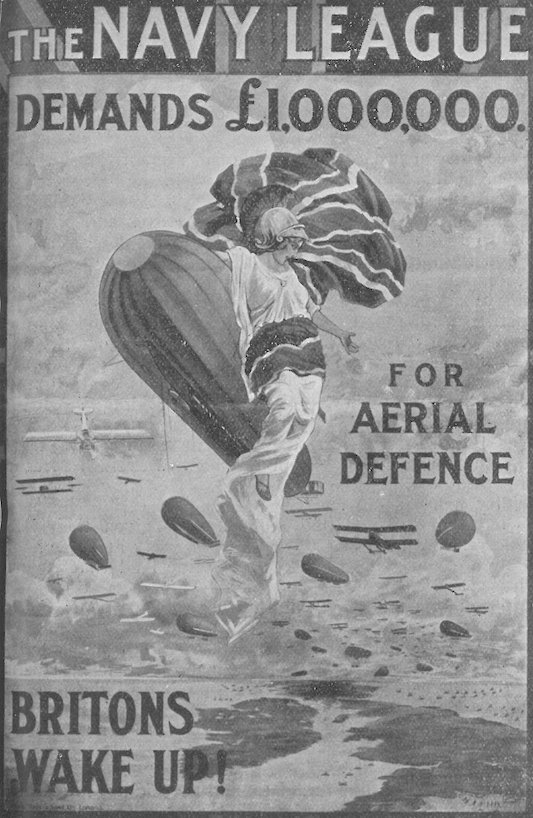
Proselytisers are famously early adopters of communications technology (see: the Gutenberg Bible). It shouldn’t be surprising that missionaries were intrigued by the development of aviation: a Baptist minister, Reverend F. W. Boreham, even claimed that
It was with a view to winging the Gospel to the uttermost ends of the eaxth that the first airman looked wistfully skywards.1
He was referring to Francesco Lana de Terzi, a Jesuit who proposed the idea of the vacuum airship in 1670, a technological impossibility at the time. Somewhat more realistically, in 1909 Reverend W. Kingscote Greenland, apparently a Methodist minister, argued in his journal The Young Man that ‘the coming of the airship will materially affect the diffusion of the Gospel throughout the world’:
He looks forward with confidence to the day when the first missionary airship will sail with a precious cargo of heroic hearts and copies of the Holy Scriptures. Already, he says, the airship can travel one hundred miles an hour. That would mean that the missionary could get to America in a day and a quarter; he could leave England on Tuesday, and preach in Calcutta or Hankow on the following Sunday. How this would almost do away with the tragedy of parting with wife and children and dear ones that now makes the missionary’s lot so sadly heroic.2
Not only that but
in case of attack by natives, outbreak of fire, or flood, the ability to sail upward into serene air and safety will much lessen the trials of his life.3
Greenland may have overestimated the capabilites of these ‘missionary airships’ (or ‘gospel airships’, as another newspaper put it).4 When aviation was eventually used for missionary or pastoral work, it was not in the form of airships. Father Paul Schulte, for example, founded the Missionary International Vehicular Association (MIVA) in 1927 which provided aeroplanes (and other forms of transport) to Catholic missionaries around the world, not airships — although he did apparently celebrate the first ever airborne Mass on the Hindenburg. Of course, aeroplanes are commonly used for such purposes today. But I’ve been unable to find any real ‘gospel airships’, only some imaginary ones, both American. One was a performance or discussion held after a Methodist Sunday school in 1917:
11:00 a.m. — ‘A trip Around the World,’ in the Missionary Airship, personally conducted by the following persons: Mrs. H. L. Snyder, Mrs. C. L. King, Mrs. G. W. Hutchinson, Mrs. A. E. Taylor, Mrs. L. A. Toothaker. Mrs. W. R. Raney is captain of the ship.5
The other seems to have been a similar idea, but rather more elaborate. Northern Baptists were said to be ‘all astir’ over news of ‘an aerial world tour scheduled for January’ 1927 in an airship named Evangel (as illustrated above):
When the denomination was first invited to circle the globe in an airship and visit all Northern Baptist mission fields en route, the announcement was received by all church members with interest, not unmixed, in some cases, with alarming visions of the perils of navigating the air. However, since it has become known that imagination built and equipped the Baptist aircraft and will propel it around the world, the most cautious of travelers are booking passage.6
There were ‘booking agents in the churches, a passenger list, and an official looking ticket’, all in the service of ‘an experiment in fixing attention upon church problems in their broader aspect’.7
The world tour is in fact a novel plan to induce a wider study of Baptist tasks and to do this, not by offering dry facts and statistics, but by letting typical examples of work done under the denomination’s cooperative program speak for themselves. This is to be accomplished by the daily reading of the Log of the Evangel, an illustrated publication in form and size like a travel guide. It is a complete departure from former methods of presenting missionary information, as the Log consists of a succession of brief word pictures, throwing into high light striking aspects of Baptist missionary activity, but making no attempt to cover the mission fields in detail […] It is not to be denied that there is an attraction to anyone with a spark of imagination, in the thought of planning a world cruise absolutely devoid of material obstacles, with a ship which in its details each passenger contrives for himself, a course that permits of unlimited side trips, company of one’s own choosing and all the comforts of home thrown in!((Ibid.))
So not only are these gospel airships imaginary, but they were preaching to the converted, rather dropping the Good News onto the heads of heathens. So is the story is that airships initially seemed limitless in potential, but after a few decades could only be thought of as just another form of long-distance transport, open only to the wealthy; or is it that they remained what they had always been, transports of delight and imagination?
![]() This work is licensed under a Creative Commons Attribution-NonCommercial-NoDerivatives 4.0 International License.
Permissions beyond the scope of this license may be available at http://airminded.org/copyright/.
This work is licensed under a Creative Commons Attribution-NonCommercial-NoDerivatives 4.0 International License.
Permissions beyond the scope of this license may be available at http://airminded.org/copyright/.
- Daily Herald (Adelaide), 10 January 1914, 3. [↩]
- Cornish Telegraph (Penzance), 3 June 1909, 4. Greenland’s article seems to have been partly reproduced, without attribution, in Evening Journal (Adelaide), 22 May 1909, 5. [↩]
- Cornish Telegraph (Penzance), 3 June 1909, 4. [↩]
- Ibid; Abderdeen Daily Journal, 4 June 1909, 9. [↩]
- Palisade Tribune, 30 November 1917, 3. [↩]
- Longmont Daily Times, 4 December 1926, 4. [↩]
- Ibid. [↩]


